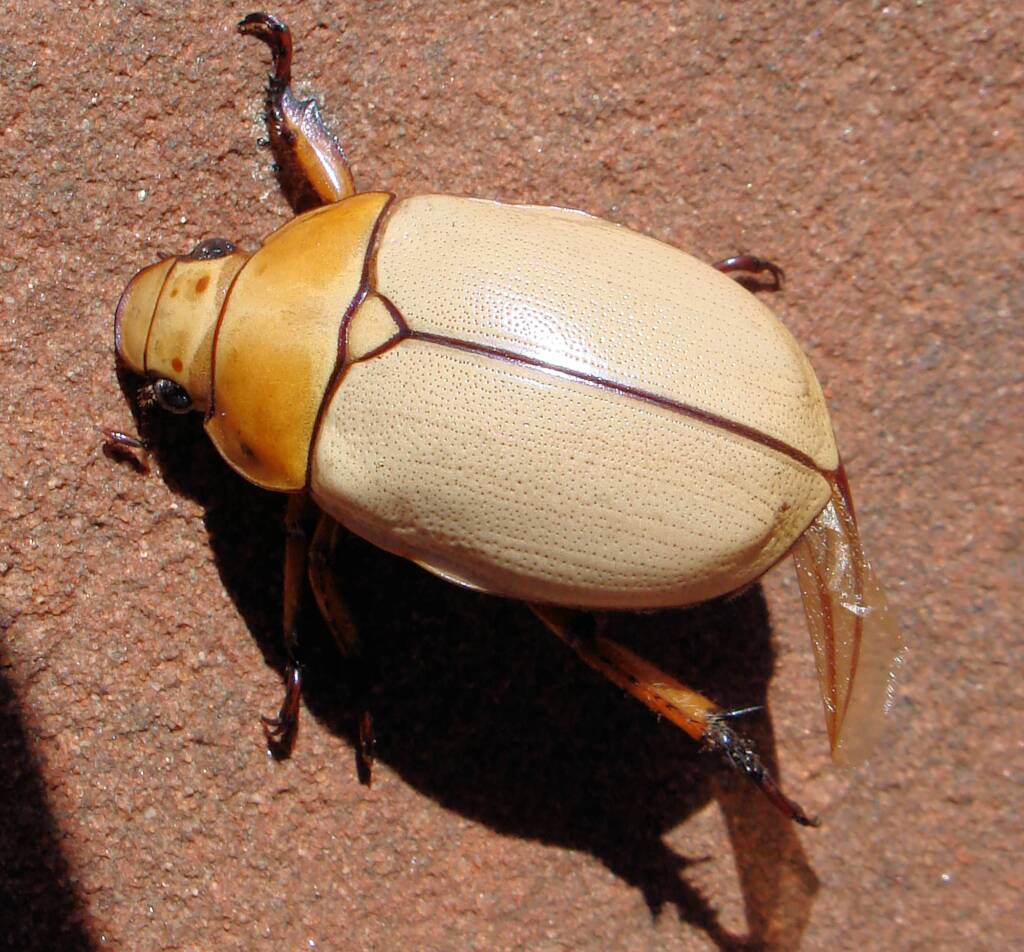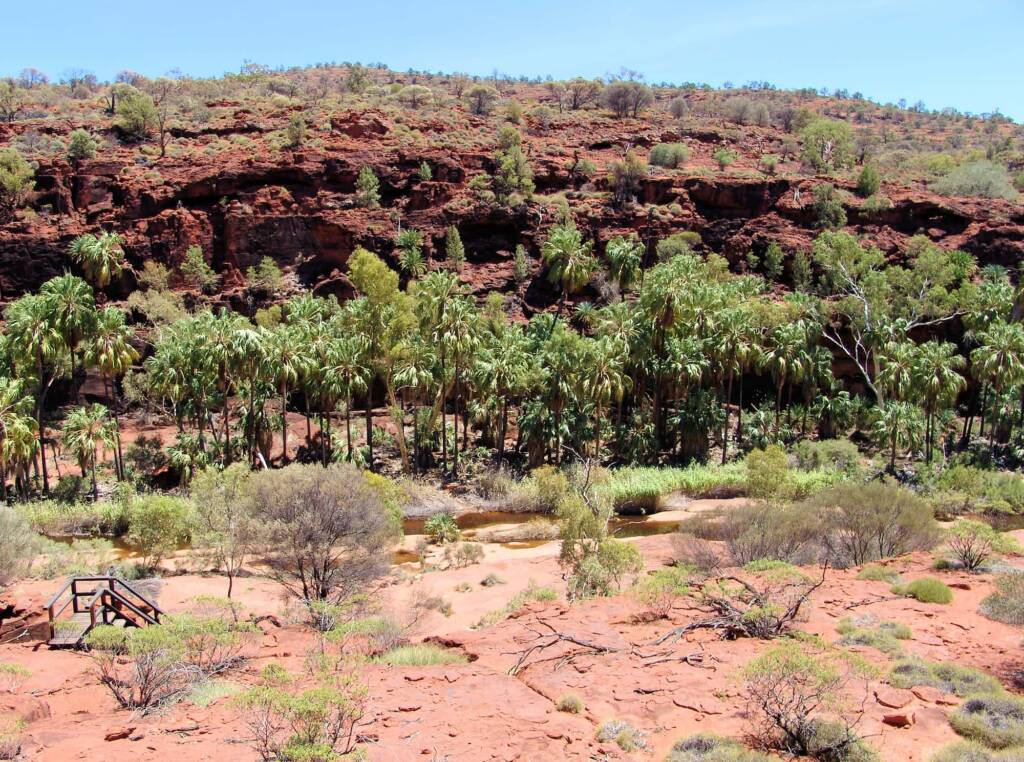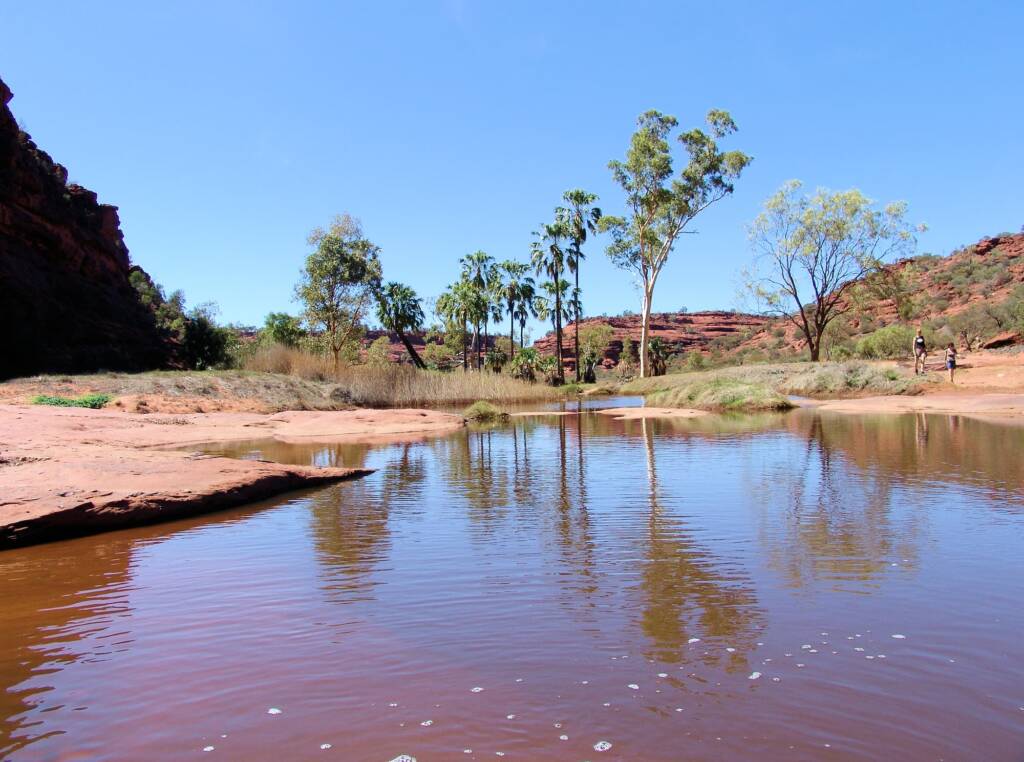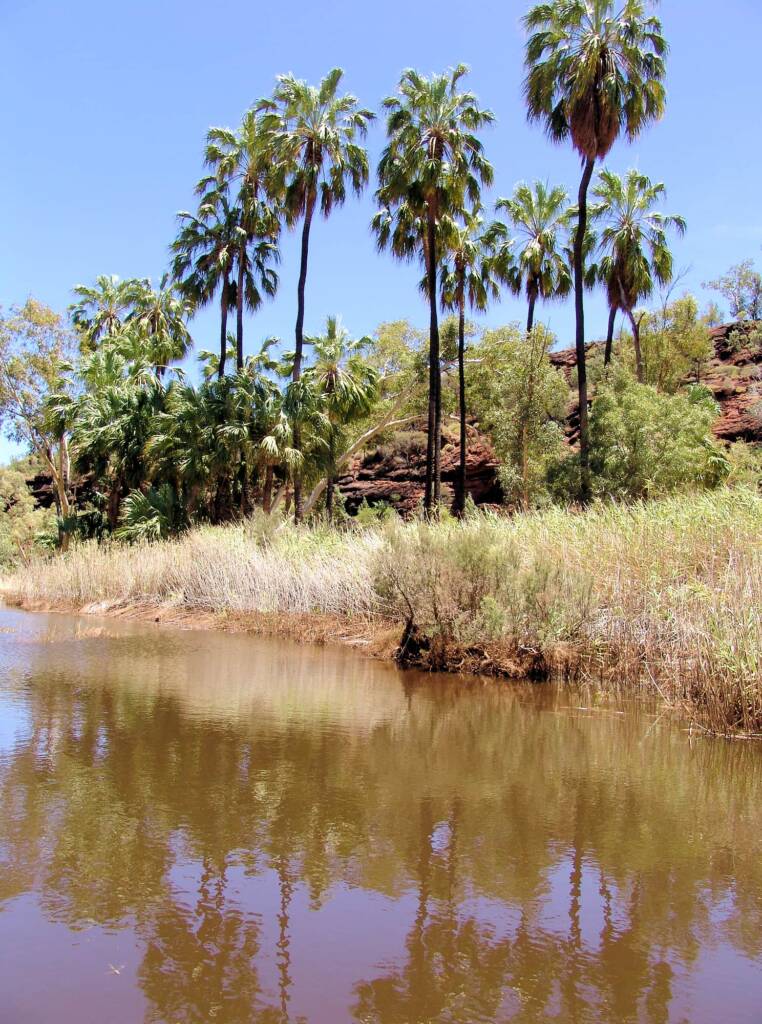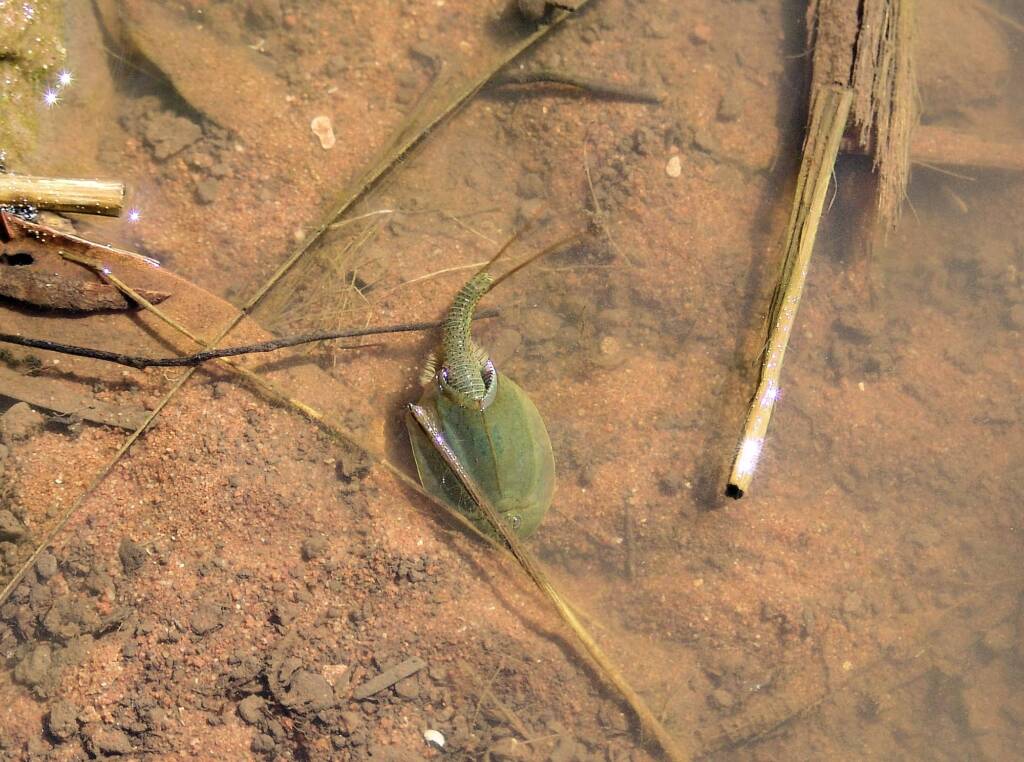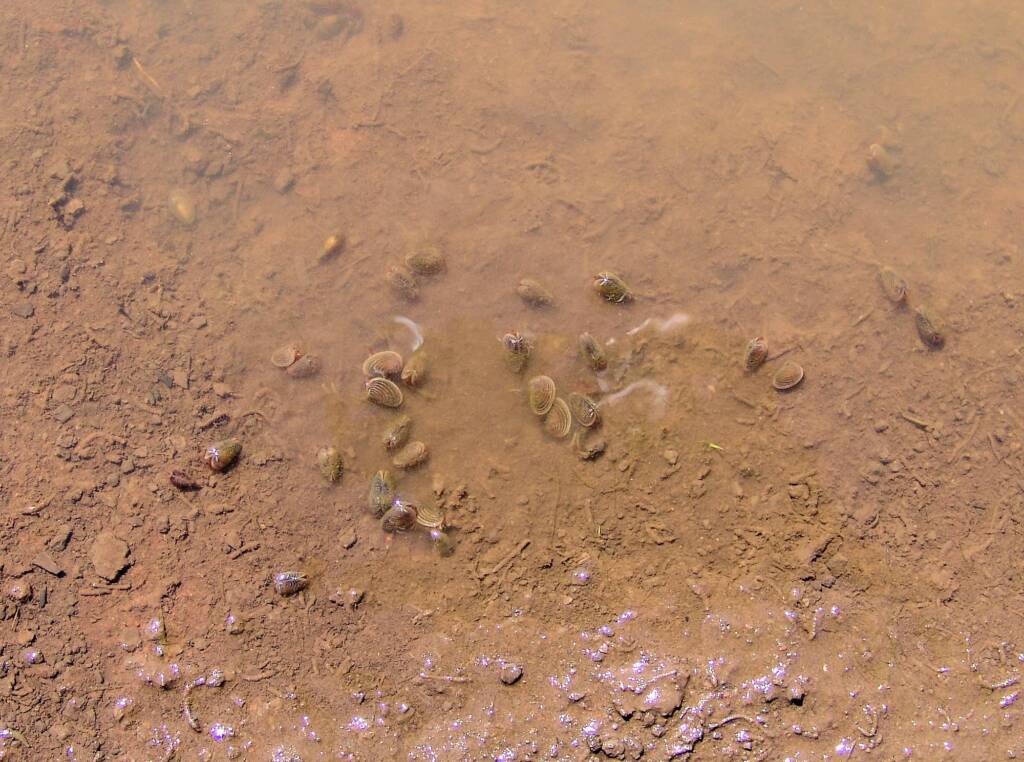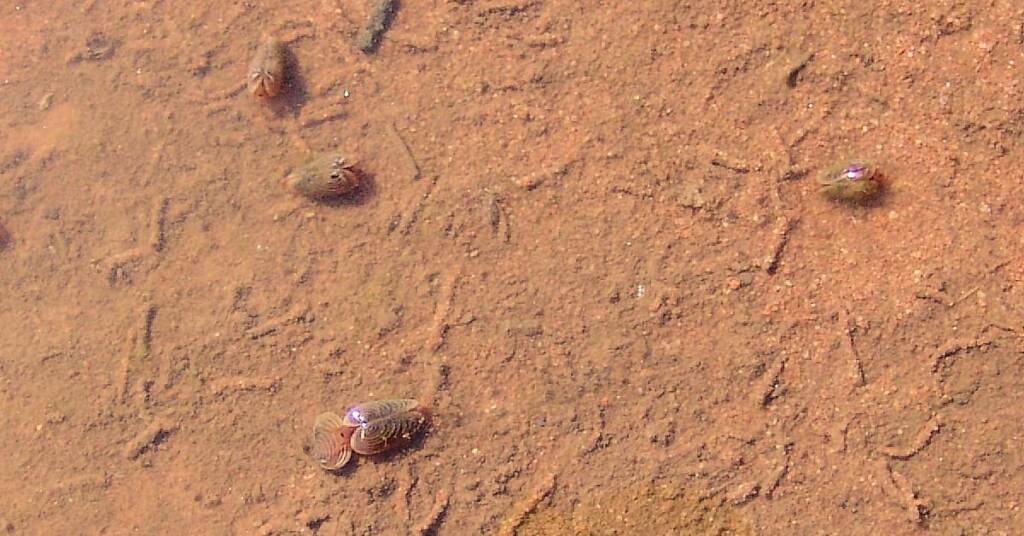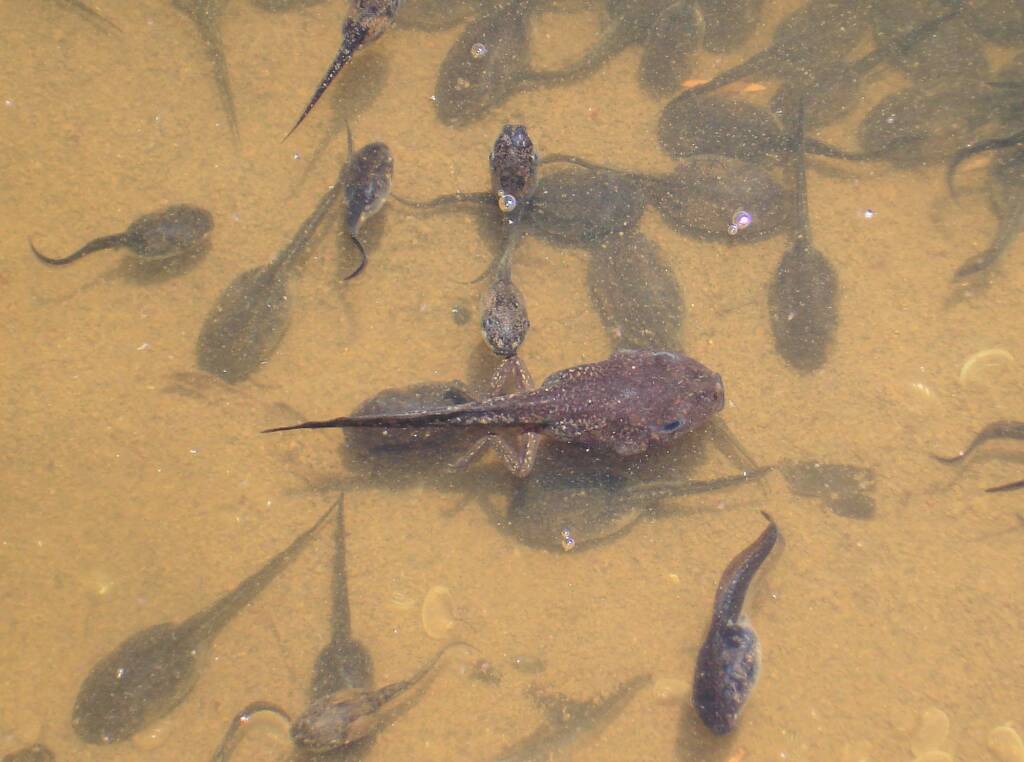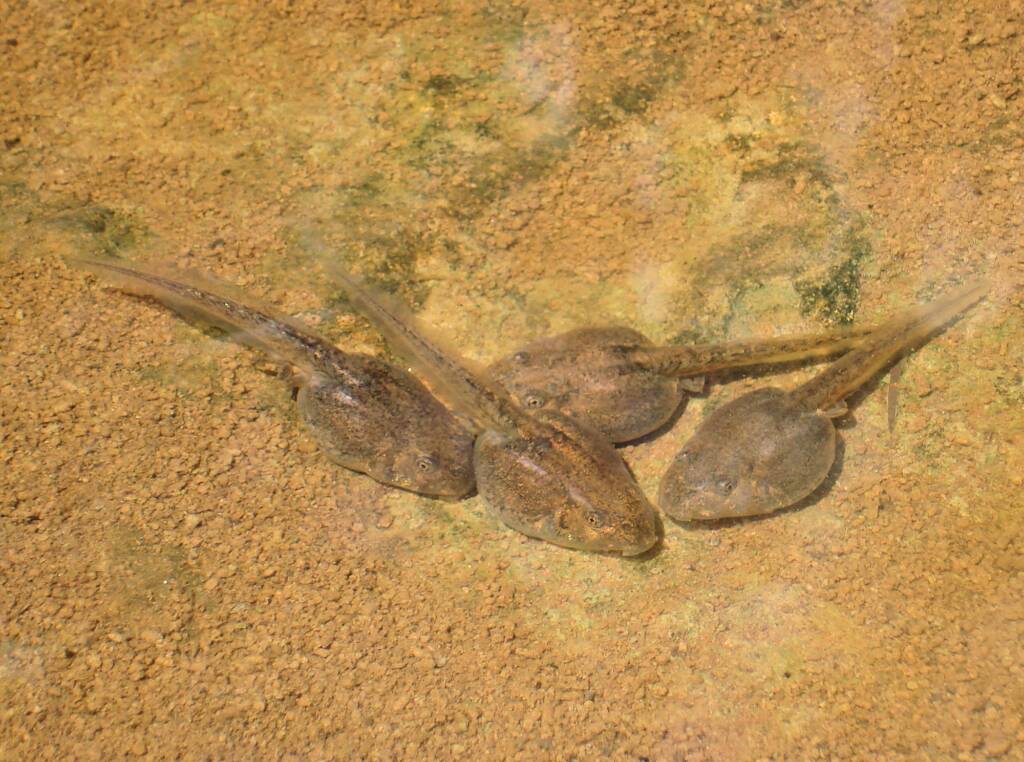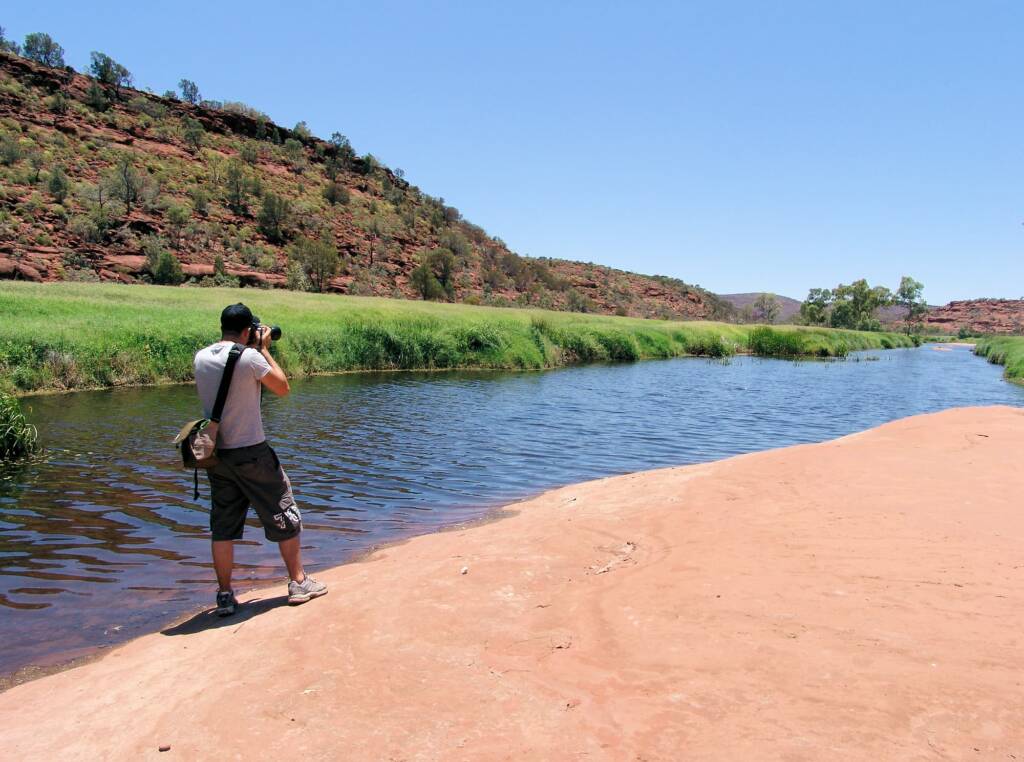Finke Gorge National Park
Finke Gorge National ParkCamping & Picnic Area Boggy Hole Palm Valley Fauna Flora
Mpulungkinya (pronouced: mool-ung-kin-yah) is the Western Arrernte name for Palm Valley.
Parks and Wildlife Commission of the Northern Territory
Located within the Finke Gorge National Park is Palm Valley, a narrow gorge that is home to the Red Cabbage Palm (Livistona mariae), remnants of a tropical rainforest that covered this area 60 million years ago. There are about 12,000 palms in the park, the oldest being 300 years old and providing a unique attraction for visitors scientist alike.
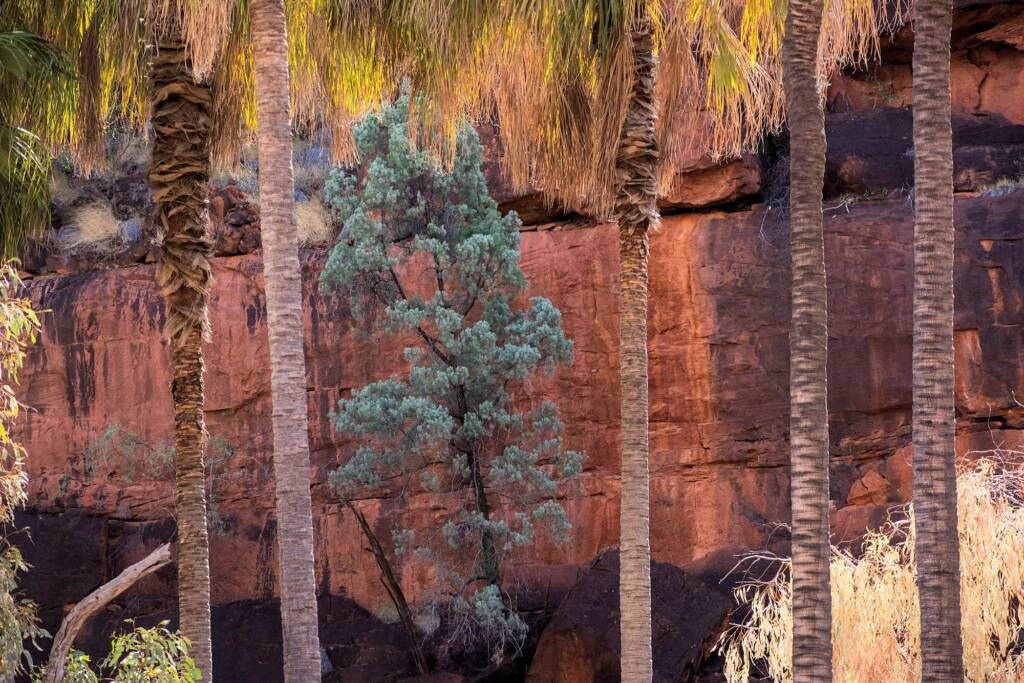
The drying of Australia
Around 20 million years ago an ocean current began circulating the South Pole and cooling of Antarctica began in earnest. A major ice cap formed, worldwid climates became cooler and more arid, as much of the Earth’s water was tied up in ice. Australia started to dry out.
As Australia collided with Asia, mountains were pushed up in New Guinea and along eastern Australia. A severe rainshoadow formed across inland Australia.
Woodland of arid-adapted plants, like wattles, Casuarinas and Eucalyptus, began to replace rainforest. Patches of rainforest probably existed in central Australia until two million years ago when the North Polar ice cap formed and the drying process was accelerated.
Today, rainforest plants found in central Australia are only in small, isolated refuges like Palm Valley, and other sheltered areas with water seeping permanently from the rocks.
Source: Parks and Wildlife Commission of the Northern Territory park signage
Of course there is more to Palm Valley than the palms. In 1959 Chippendale listed 200 plants. Since then a total of 333 plant species have been recorded1.
Arankaia (pronouced: rung-kee-ah) is the Western Arrernte name for the palms.
Parks and Wildlife Commission of the Northern Territory
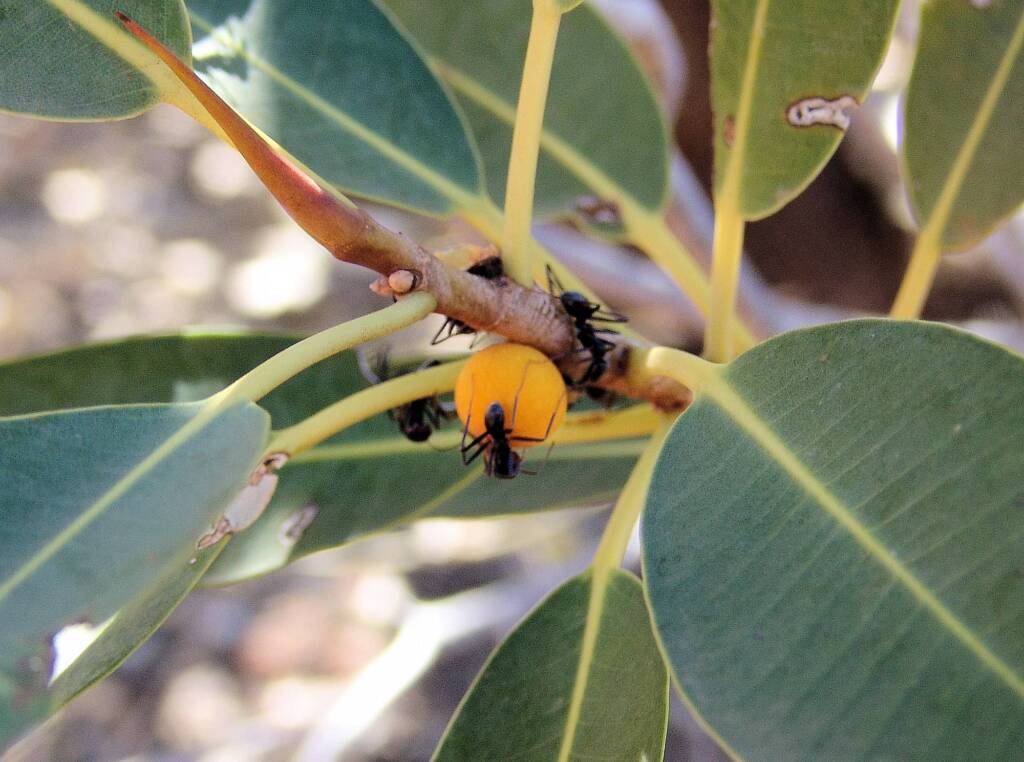
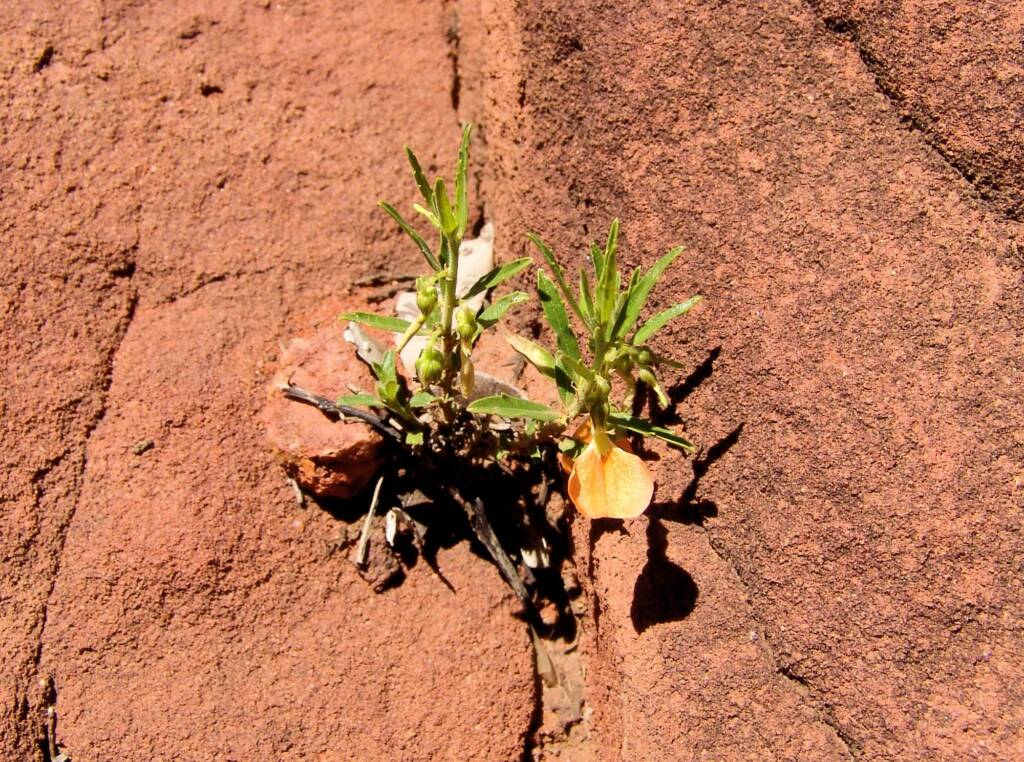
The average rainfall for Palm Valley is only 200 mm per year. Although the gorge usually appears dry, there are some small pockets of semi-permanent spring-fed pools. These small pools provide essential water for local wildlife.
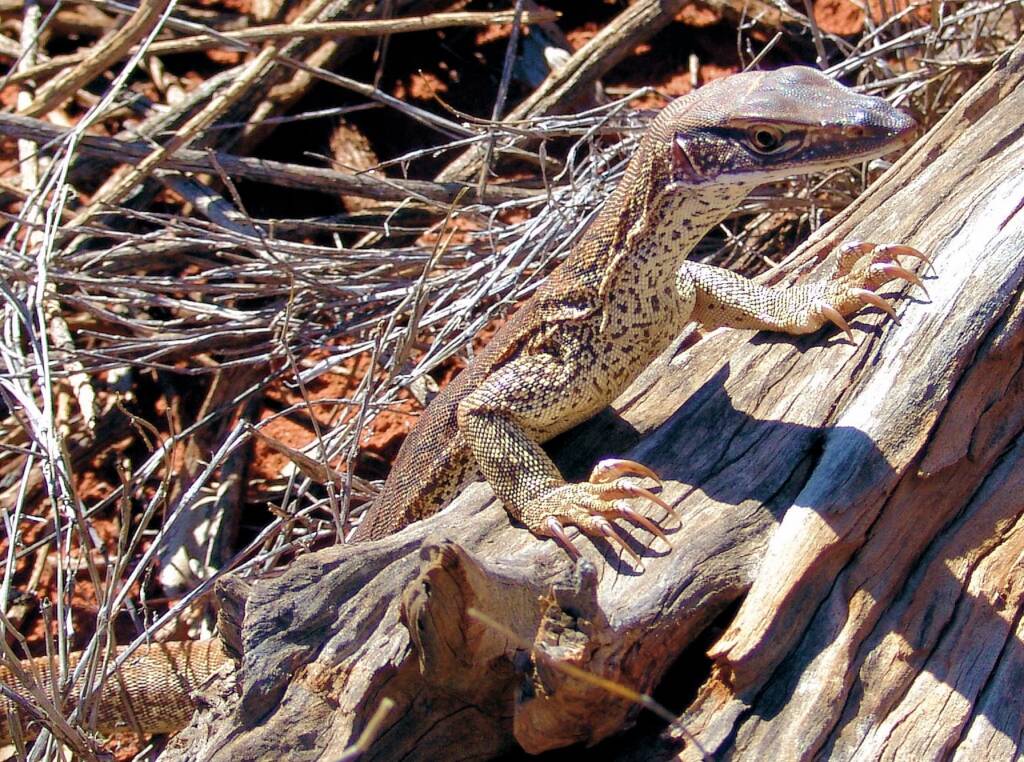
During significant rainfall in the region, and if you are lucky to be there during one of those wet periods, it is a wonderful sight to see the expanses of water flowing through the valley gorge. Such event also provide the opportunity for visitors to witness a variety of aquatic life such as desert fish, shield shrimps (Triops australiensis), clam shrimp (class Branchiopoda, genus Eulimnadia), tadpoles and frogs (including species Cyclorana maini and Litoria rubella).
An article on the ABC report that the Hydrogeologist John Wischusen has written a PhD thesis, about how the palms might have survived through the extreme temperatures of prehistoric times because of very old ground water, and that they continue to tap into this 300,000 year old water. This water is moving slowly enough through the underlying Hermannsburg sandstone that could probably sustain the palm population for hundreds of thousands of years without any further rainfall2, 3.

Since then in 2012, a new theory has emerged when an international team of researchers, tested the relatedness of the two palms species, the Mataranka palms (Livistona rigida) and the Palm Valley palms (Livistona mariae) to find that they two species were genetically indistinguishable. It has since been speculated that the palms had been brought here by Aboriginal people within the last 30,000 years. The Livistona plant are an edible when young, and in 2015 another discovery found that CArl Strehlow recorded a local Aboriginal story, that tells of palm seed being brought to the Red Centre along time ago.4
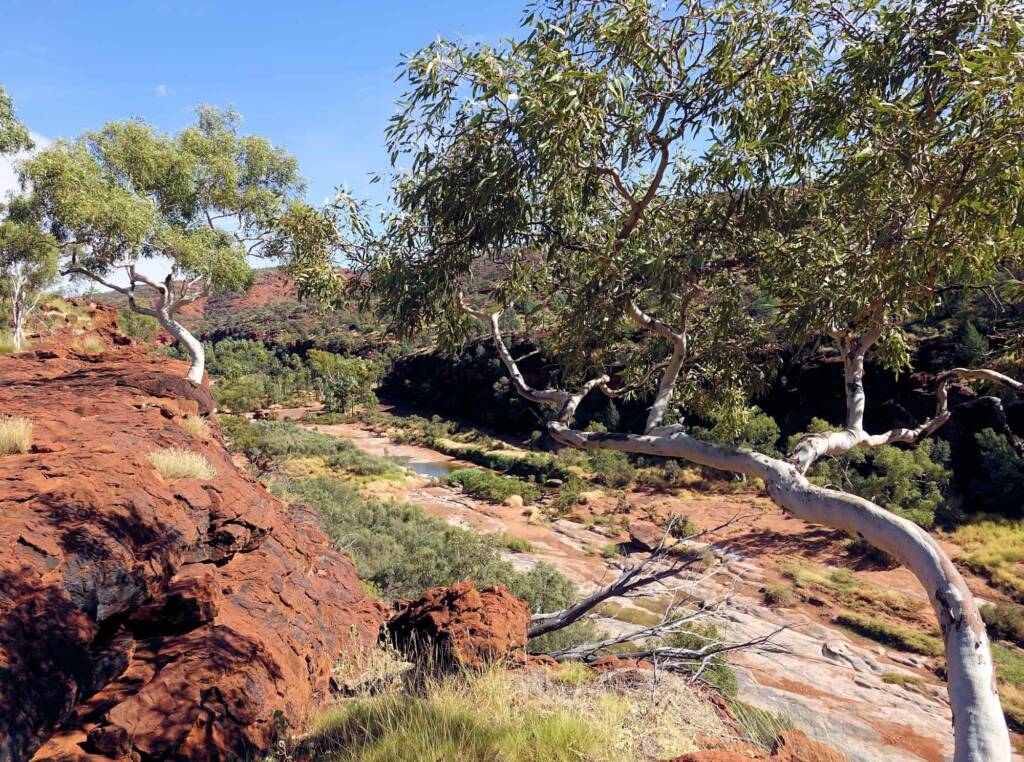
An oasis in the arid region of Central Australia, Palm Valley has an average rainfall of only 200 mm per year. A low gorge with a series of springs along the valley floor, the spring water supports a diverse range of plant species, many which are rare in the region. The preservation of these remnant vegetation is due to the existence of these springs over a vast time period.
The springs provide a discharge point for groundwater through the fractured sandstone aquifer. The rocks over a long time frame became folded into broad arches and basins, part of the Palaeozoic aged Amadeus Basin. The folding creates the fractures that form the aquifer and the valley itself. Water can be seen seeping
from these small fractures on the valley floor, where it collects in small pools. Certain places along the valley floor, if you press firmly with your foot, you can see moisture seep up.
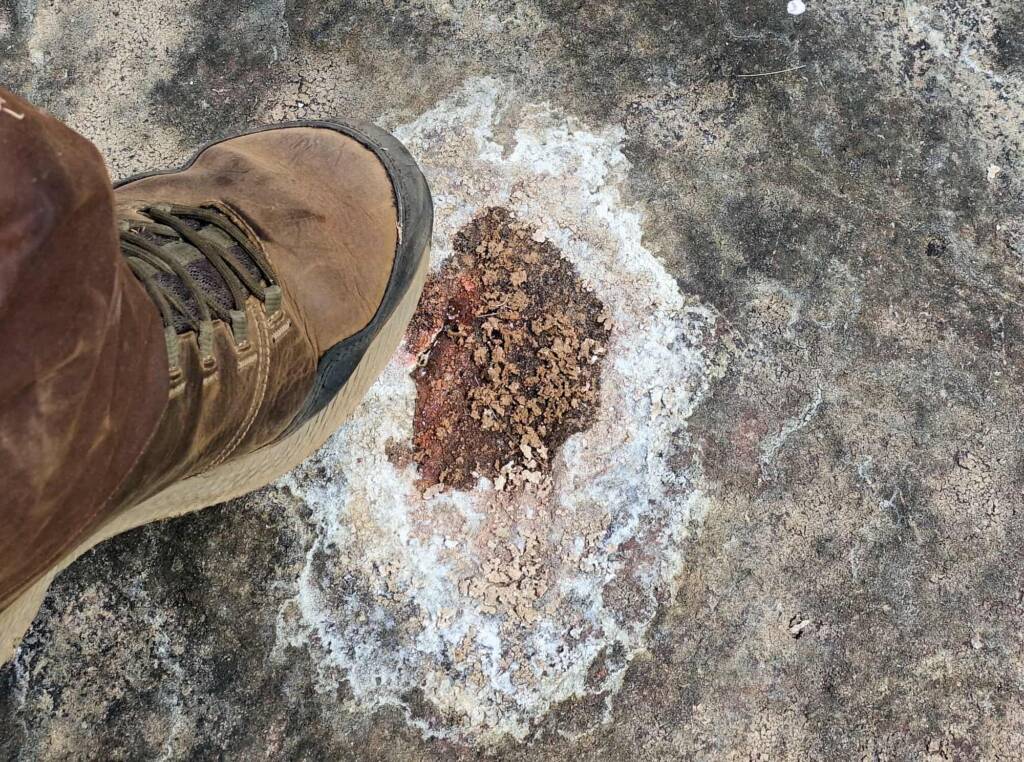
Access
Palm Valley is about 18 km south of Hermannsburg. Access is by 4WD vehicle that mainly follows the dry riverbed of the Finke River. There are campground facilities with toilets, hot showers, wood and gas BBQs and picnic areas. Please ensure you take your rubbish with you. During May to October, there are Ranger guided activities as part of the ‘Territory Parks Alive’. Check NT Parks and Reserve for further information on park and camping fees.

Walks
There are two marked tracks, both designed to give visitors a first hand view of the exotic Palm Valley and the ‘normal’ arid country surrounding it. Both tracks are easy to medium walking over rocky escarpment.
- Arankaia Walk (pronounced rung-kee-ah)
Time: 1 hour — Distance: 2 km loop walk
This short walk goes up the Valley, pass lush groves of palms and then up some stairs, and back along a dry sandstone plateau with superb views. Arankaia is the Arrernte name for the palm. - Mpulungkinya Track (pronounced mool-ung-kin-yah)
Time: 2 hours — Distance: 5 km loop walk
This longer track goes further up the Valley, where the palm groves are thicker, and then back along the arid sandstone plateau, re-joining the Arankaia Walk not long before the carpark.
Palm Valley is located about 124 km south-west of Alice Springs and about 18 km south of the Hermannsburg Mission. Check out the Northern Territory Parks and Reserves website for additional information.
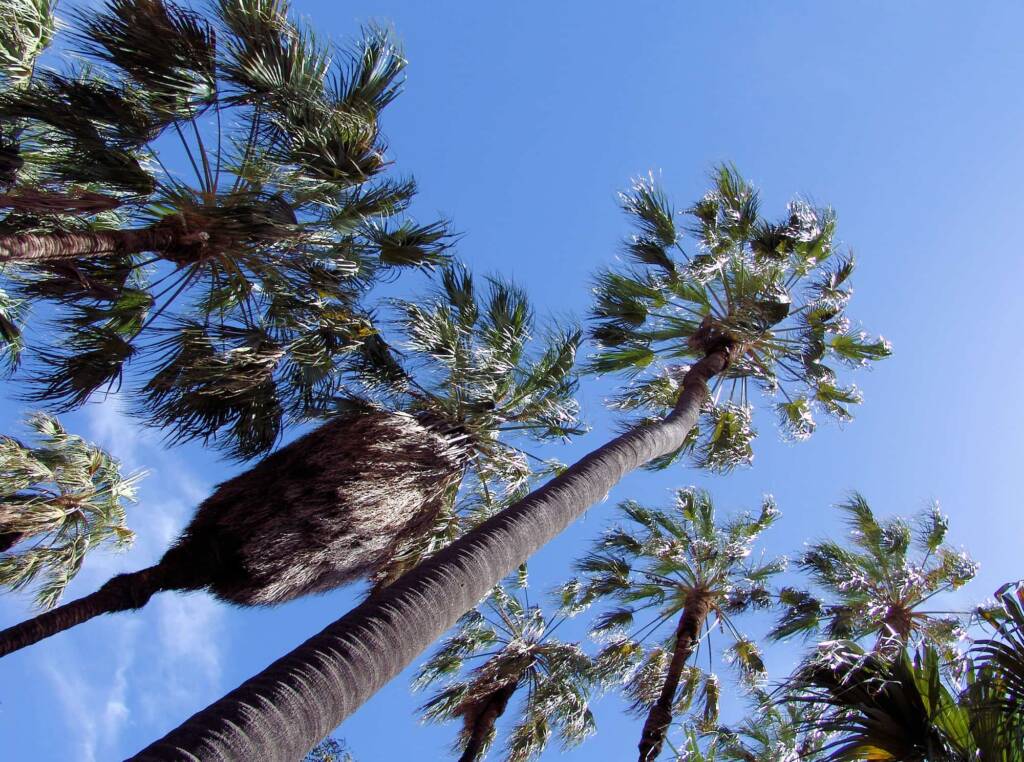
Palm Valley Aboriginal and European History
Dreamtime Stories
Palm Valley and the surrounding region has cultural significance to the indigenous Western Arrernte People, known to them as Pmolankinya. The story describe a disastrous bush fire, that occurred in the north during the Dreamtime. Many of the ancestors were burned during this catastrophe. The younger men were carried by the flames and strong winds, and dropped into Palm Valley, where they became the palms and cycads. According to the Arrernte tradition, the suffering of the fire ancestors is represented by the blackened trunks of the palms, whilst the palm leaves represent the long hair of the young men.
A recent news article confirms the discovery of a bowl-shaped crater in Palm Valley, the result of an ancient cosmic impact that created the meteorite crater. The discovery by Sydney-based scientist and astronomer Duane Hamacher was based on Aboriginal dreaming stories, in particular one story told by the Western Arrernte people of a star that fell into a waterhole called Puka in the valley, where Kulaia, the serpent lived.5, 6
European Discovery
The first European to see the palm trees was the explorer Ernest Giles, who in 1872 was following the course of the Finke River, on his first attempt to reach the Western Australia coast from South Australia. Giles did not follow the tributary into Palm Valley, because of threatening rain and fearing the Fink River’s mighty floods, as was evident by the debris tangled high up in the River Red Gums. It wasn’t until the settlement of the Hermannsburg Mission in 1877, that Palm Valley itself was discovered.

Aboriginal Dreaming
The Rathapa / Twin Boys Dreaming Story
Told by Conrad Ratara, traditional custodian for the Palm Valley area.
The Rathapa (pronouced Rart-ah-bah)
In the Dreaming a woman from Ntaria (Hermannsburg) left her community, as women traditionally did, and came to Palm Valley to give birth to her babies. She gave birth to twin boys at a rockhole up Palm Valley, called Itaratharra (prounounced Ee-tah-ra-tah-rah). These two special spirit babies had all of men’s Law from birth.
When the boys were one year old and crawling, their mother set out to take them home to Ntaria. She wandered ahead picking bush tucker while the boys crawled along behind. The twins crawled all the way home, making Palm Valley as they went.
These two boys were really cheeky. Towards the end of their trip they called out to their mother and told her not to look back because they were doing men’s business (ceremonies). Their mother ignored their warning and looked back. When the twins got to Ntaria they killed their mother becuase she’d gone against the Law.
Source: Parks and Wildlife Commission of the Northern Territory signage
Footnote & References
- Palm & Cycad Societies of Australia — Palms Livistona mariae
- 300,000 yr-old water sustains desert palm trees, (Thursday, May 17, 2007). ABC News Online. Retrieved Thursday, May 17, 2007. 7:36 am (AEST), https://www.abc.net.au/news/2007-05-17/300000-yr-old-water-sustains-desert-palm-trees/2550592
- Natural Resources, Environment and the Arts • Palm Valley Spring – Hydrogeology (formerly retrieved from http://www.nt.gov.au/nreta/naturalresources/water/groundwater/springs/palm.html#hydro)
- Busting a botanical myth, by John Pickrell, 14 December 2016, Australian Geographic, https://www.australiangeographic.com.au/blogs/austropalaeo/2016/12/busting-a-botanical-myth/
- Mystery solved by Dream, Retrieved December 30th, 2009, ntnews.com.au
- January 29th: The Dreamtime Meteor Crater, by Steve Nerlich, 29 Jan 2010, Cheap Astro, Podcast, 365 Days of Astronomy, https://cosmoquest.org/x/365daysofastronomy/2010/01/29/january-29th-the-dreamtime-meteor-crater/
Finke Gorge National ParkCamping & Picnic Area Boggy Hole Palm Valley Fauna Flora
